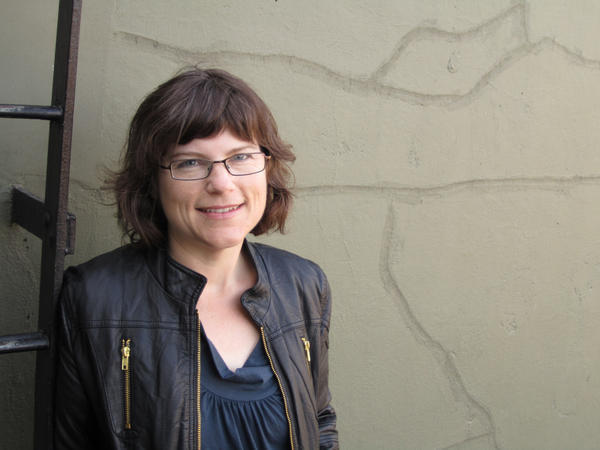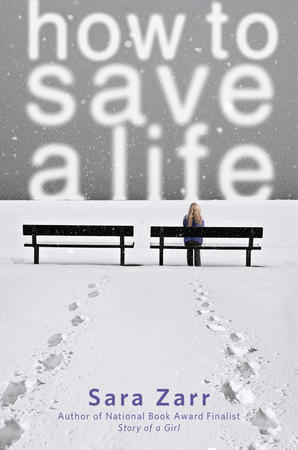
“(Writing) is the kind of thing you do because you can’t stand not to,” says Sara Zarr.
The author of “Once Was Lost,” “Sweethearts” and the National Book Award finalist “Story of a Girl” has always been a reader and has always been making up stories, but it wasn’t until after college that she considered the idea of writing as a career.
Writing for young adults, Sara says, is something that came along with the desire to write, without her really choosing it. “When I thought of stories, they almost always featured characters in high school,” she told Cracking the Cover. “I’m sure part of that came from how much I loved reading contemporary realistic YA as a teen and in my 20s (and still).”
Sara’s latest book, “How to Save a Life” was sparked by writing prompt she found that said to “write a scene involving an adult talking his or her aging parent out of adopting an infant.” Because she writes YA, the “adult” in her version was 17.
Though told from two points of view, “How to Save a Life” is really the story of three women at different stages in their lives — Jill, a high school senior who is grieving the loss of her dad; 18-year-old Mandy, who is pregnant and alone in the world; and Robin, Jill’s mother, who decides to adopt Mandy’s baby. The book opens just before the three women meet each other for the first time.
 Figuring out “what happens” is a challenge Sara faces when writing all of her books. “I had these people, and the basic situation, but a situation is not a story,” she said. “Thinking about what brought each girl to the moment they were now in took some work.”
Figuring out “what happens” is a challenge Sara faces when writing all of her books. “I had these people, and the basic situation, but a situation is not a story,” she said. “Thinking about what brought each girl to the moment they were now in took some work.”
But along those lines, some of Sara’s favorite parts to write were the ones that “bring Jill and Mandy in direct conversation and, sometimes, confrontation. Whenever they were on the page together, it was a lot of fun for me.”
That doesn’t mean writing both characters was easy. At first, Sara had a lot of trouble finding Mandy’s voice. “Jill’s chapters poured out of me, and Mandy’s felt like a slog,” she said. “Because, I suppose, I’m a lot like Jill and understand her and the way she deals with pain. Mandy was more of a mystery to me and it took some time to find her voice. The switching itself wasn’t hard, though. I enjoyed the freedom to do that and the different storytelling things you can do with a shared narrative.”
Sara doesn’t write actual prose composition all day, but says she usually has a full day of “being a writer.” Things are usually busier around book release time with emails, speaking, social networking and traveling.
“For the writing itself,” Sara said, “the ritual includes turning off the Internet, turning on some specific music, and maybe pouring some coffee. The actual writing part of my day might be an hour and a half to three hours, maybe four or five if I’m under a tight deadline. But anything over three is rare for me.”
Looking back at how her writing has evolved, Sara says that it takes less time now to move from the “first stuttering” to “something decent.” That’s the nature of practice and experience. “I hope that as I continue to get older, I get wiser, and I hope that shows in my writing. I’m less concerned now with what people think and more concerned about what I think, and if I did the job I wanted to do.”
*Sara took a lot of time and care to answer Cracking the Cover’s questions. Read a complete transcript of her interview.
**Sara has a number of signings planned in Salt Lake and the Midwest. Visit her appearances page for more information.

1 Comment
I’ve read (and loved) HOW TO SAVE A LIFE, so I really enjoyed reading a bit about Sara’s writing process and challenges while she worked on it. Thanks!